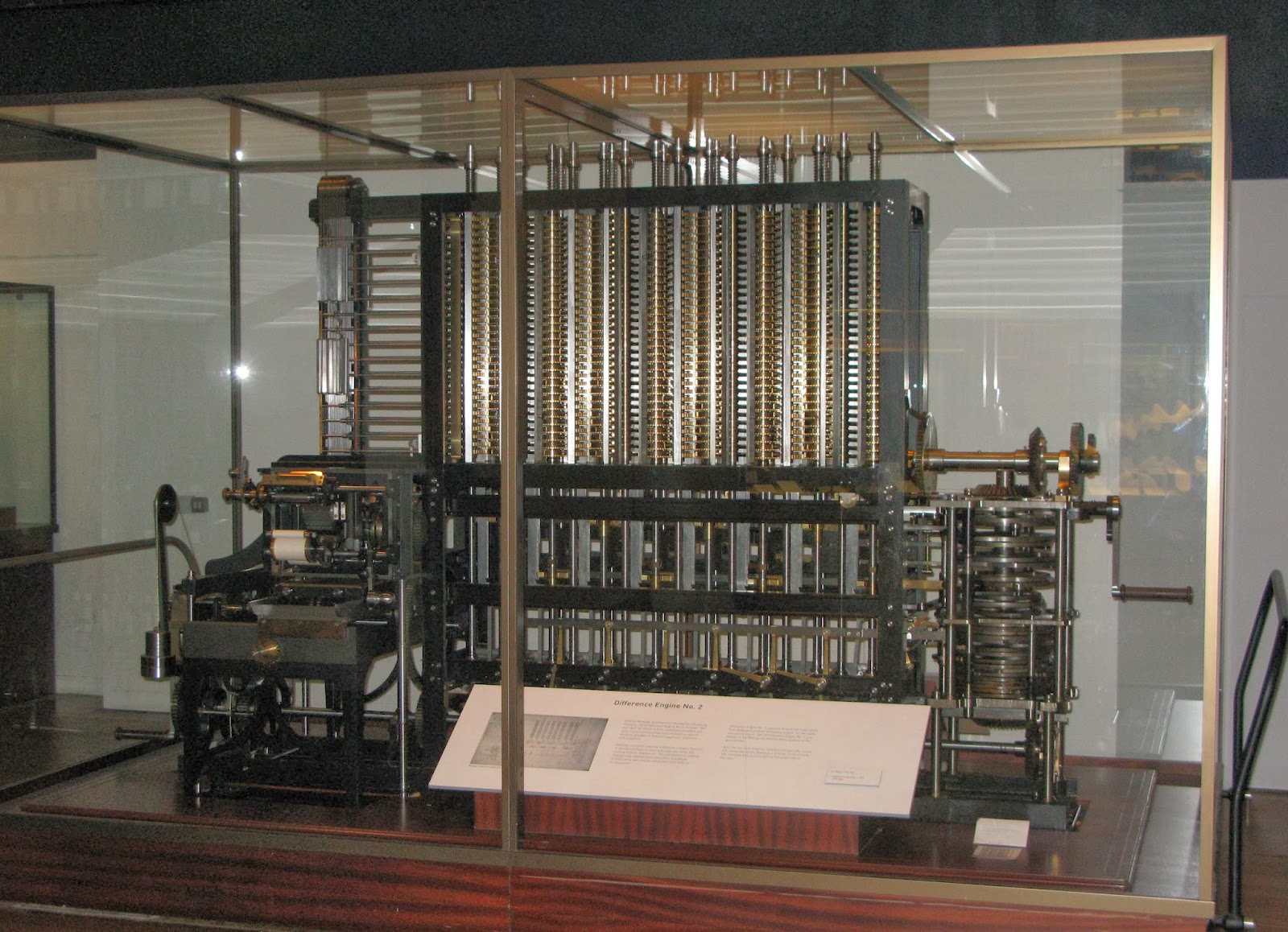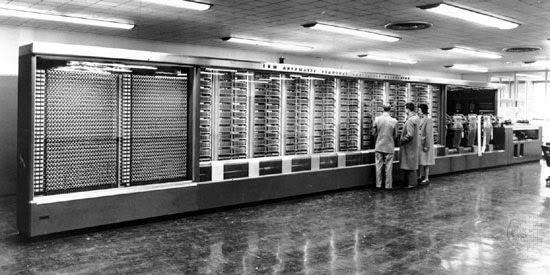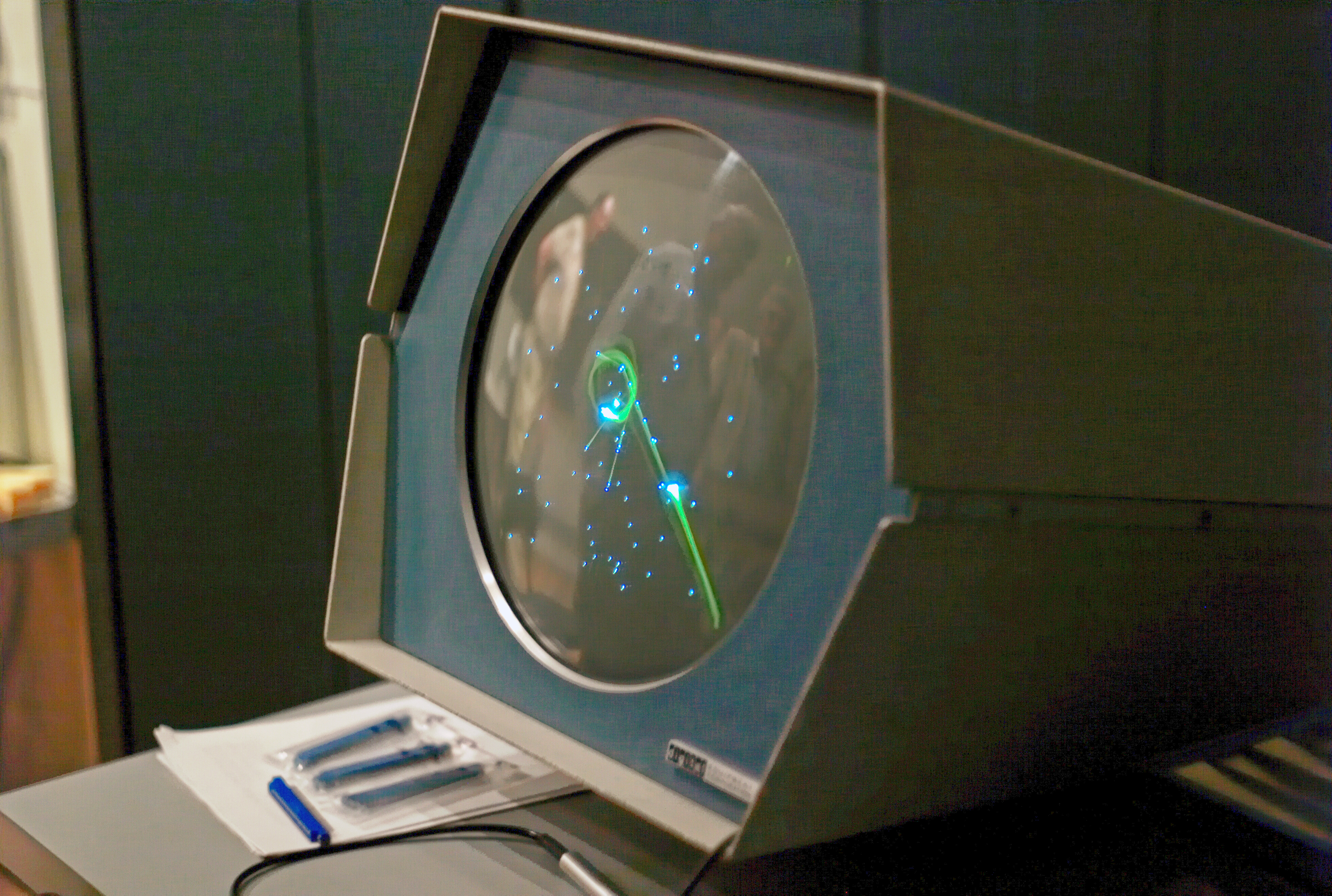First of all apologies for the massive delay in my planned blog post about cheat codes and easter eggs and the delay on this post right here. We have had 2 intensive weeks at university and I got caught up in my work after that, so I didn't have much time left to write on my blog. However, the post is definitely coming along, yet first of all I'd like to give you an insight into the history of video games themselves. So without further ado let's start off right at the beginning. Let's take a trip back into the past and look at how computers developed over time and how video games came into existence!
Technology?
 |
| Jacquard Loom 'Punch Cards' (source: wikipedia.org) |
While this invention not only helped the textile industry, it also helped the advance in technology. It is the first time that a machine was able to follow algorithms with the use of punch cards, which later on turned out to be the standard in computing technology. Jacquard was awarded with a medal and patent for his invention, however the French government then claimed for it to be public property.
Complex Calculations
Following up from the Jacquard Loom we are now moving forward a few decades and are now in Britain. Charles Babbage, a British mathematician had the idea to create a machine which would allow people with no skill in mathematics to do arithmetic calculations. After coming up with plans of creating his 'Difference Engine' he quickly earned himself a sponsorship from the government and was working with the engineer Joseph Clement to construct his machine using a highly complex system of toothed wheels, however by 1833 the costs of his project had
come to £17,000, which is the equivalent to the costs of two battleships in that period and eventually forced the government to cancel the project all together.
 |
| London Science Museum's Difference Engine. Built from Babbage's design. (source: wikipedia.org) |
Digitalizing The Computer
A hundred years have passed and while technology advanced more and more we find ourselves in Germany just before the second world war. In 1936 Konrad Zuse gave up his job as a design engineer to fully commit his time into developing and building a computer. His main idea was to use binary instead of decimal calculating units and by 1938 he had come up with his first prototype, the Zuse Z1. It ran using the planned binary system and included some impressing features, such as having a memory as well as something vaguely equivalent to a central processor. On top of that it was using a keyboard to input the numbers.
 |
| Z4 on display at the Deutsches Museum, Munich. (source: wikipedia.org) |
Following up from his success he then developed further and soon after created the Z2. While still having everything that made the Z1 successful he decided to replace the mechanical switches with electro-magnetic relays, which made it easier to use. He also introduced a system similar to that of the punch cards that the Jacquard Loom was using. As time went on Zuse continued to work on his invention and eventually made the Z3 and Z4. Unfortunately most of his machines were burned down in a fire in Berlin in 1944, however Zuse managed to save his Z4, which up to date is known as the world's first digital computer.
Simultaneously on the other side of the Atlantic, Howard H. Aiken had the same idea as many similar inventors and was planning to create a machine that would be able to take away the time and effort needed to perform endless calculations. He got his idea from looking at Babbage's Analytical Engine and realized that with modern technology he would be able to actually create it, however he didn't have the required fund for such a project. In 1936, IBM was already a highly successful company and so Aiken decided to turn to them to receive the necessary resources to create his computer. He contacted one of IBM's most respected employees, James Bryce, who immediately saw the force of Aiken's idea and spoke to his boss about it who made an on the spot decision to hand out a million dollars to Aiken's development.
 |
| Harvard Mark I (source: kids.britannica.com) |
Development went on for several years and Aiken decided to stick to a digital rather than an analogue computer. In 1943 the Harvard Mark I was finally born and with a massive size of 55 feet in length and 8 feet in height it was one of the biggest computers to be built. It contained not much less than a million individual components and it was clear that there would never be another machine just like it.
And then... Video Games!
 |
| A recreation of the original Tennis for Two constructed for the 50th anniversary of the game's first appearance. (source: bnl.gov) |
Higinbotham used several computers to run his game and it was highly popular with visitors. What he couldn't possibly have dreamed of was that he just laid the foundation for an entire industry, which in less than fifty years would be worth more than $9.5 billion in the U.S. alone.
The Fathers of the Industry
 |
| Spacewar on PDP-1 (source: wikipedia.org) |
A few years later in 1967, Ralph Baer was working together with a team of engineers to create games which could be played on a TV. While the company he worked for was slowly starting to fall apart, Baer looked for alternative companies who would invest in his concept and eventually found Magnavox, which immediately saw the potential in his idea. Baer then signed the contract in 1971 before the Magnavox Odyssey was released in 1972.
 |
| Magnavox Odyssey (source: magnavox-odyssey.com) |
 |
| Atari Pong (source: wikipedia.org) |
Soon after Pong started gaining attention from its success, Magnavox took Bushnell to court, claiming that he had violated one of Baer's patents. Knowing that he was lacking the required funds to get Atari through court, Bushnell was looking for alternative solutions and eventually decided on signing a settlement with Magnavox, making Atari their sole licensee. The case never went to court and over the years Nolan Bushnell became known as the "Father of Video Games".
End of Part 1 - References
So this is a brief start into the history of video games. In my next blog post I will continue this and outline some of the things that happened in the 80s and 90s and after that write another blog post about the 2000s and present, before finally getting back to my planned post about easter eggs and cheat codes. Stay tuned~
MIRZOEFF, N. (c2009). An introduction to visual culture. 2nd ed. Abingdon: Routledge.
EVANS, C. (1981). The making of the micro : a history of the computer. London: Victor Gollancz.
KENT, S. (c2001). The ultimate history of video games : from Pong to Pokemon and beyond : the story behind the craze that touched our lives and changed the world. New York: Three Rivers.
PHIL AMENT. (2006) Jacquard Loom History - Invention of the Jacquard Loom [Online] The Great Idea Finder. Available from: http://www.ideafinder.com/history/inventions/jacquard.htm [Accessed 02/2014].
BNL. (n.d) The First Video Game? [Online] BNL. Available from: http://www.bnl.gov/about/history/firstvideo.php [Accessed 02/2014].
WIKIPEDIA. (2014) French Revolution. [Online]. Available from: http://en.wikipedia.org/wiki/French_Revolution [Accessed 02/2014].
WIKIPEDIA. (2014) Jacquard loom. [Online]. Available from: http://en.wikipedia.org/wiki/Jacquard_loom [Accessed 02/2014].
WIKIPEDIA. (2014) Tennis for Two. [Online]. Available from : http://en.wikipedia.org/wiki/Tennis_for_Two [Accessed 02/2014].
No comments:
Post a Comment